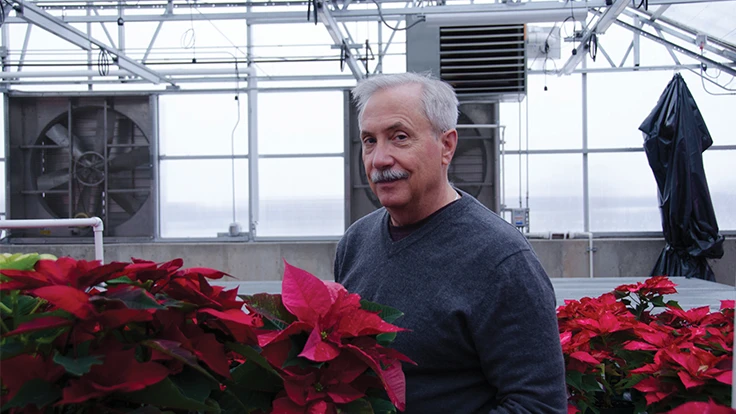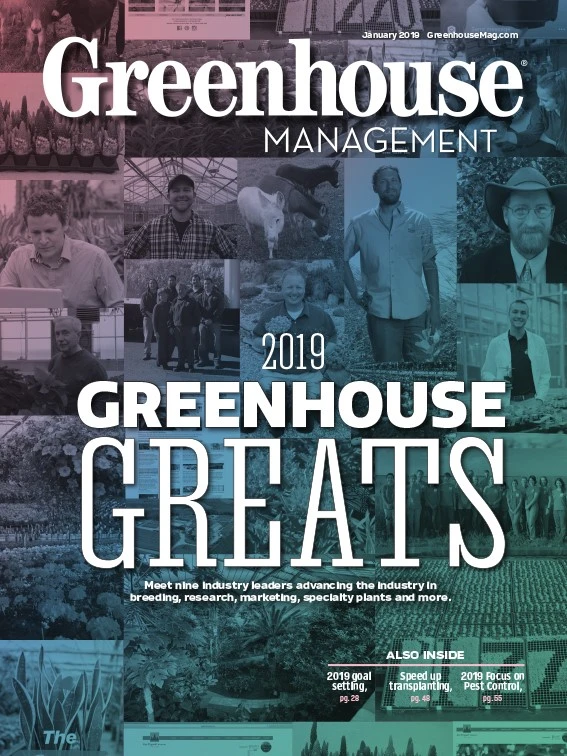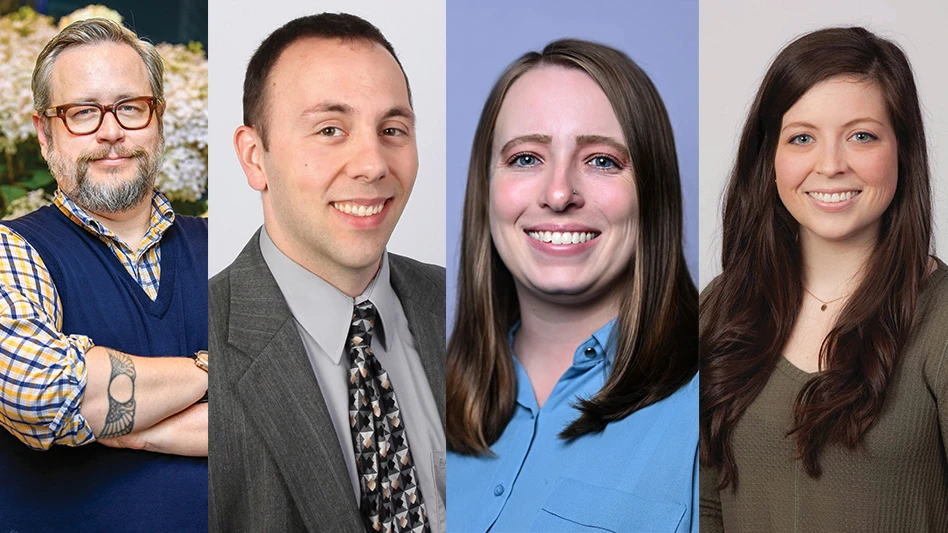

WHY HE’S GREAT: Dr. Steven Newman’s extension work at Colorado State University helps commercial greenhouse growers and plucky start-ups establish their planting needs amid the Rocky Mountain west’s variable climate. Utilizing industry input, Newman’s educational programming covers topics including water use efficiency, chemical plant growth regulation and new crop evaluation.
“I’m bringing traditional greenhouse practices into the realm of controlled environment agriculture,” says Newman, an extension specialist and floriculture professor at CSU. “Many researchers focus on new technology, new sensors, or new controls. Sometimes it’s important to return to the basics to determine what’s relevant in new technologies.”
A VARIED CAREER: An increased movement into urban agriculture sees growers consulting Newman on local zoning codes for traditional and tunnel greenhouses. Companies are also concerned about water usage, considering that most of Colorado is abnormally dry or dealing with some level of drought, according to federal data.
“You’ve got to plan your water system, because well and mountain water are night and day,” Newman says.
Microgreens, primarily used as a visual or flavor complement at fine dining restaurants, are becoming a staple among green industry professionals. Local producers are growing arugula, beets, bibb lettuce and amaranth under Newman’s guidance, studying the foods’ benefits in reducing obesity, diabetes and other detrimental health conditions.
“Microgreens are a fun way to have vegetables in your diet,” Newman says. “You can put them in a salad to add a little extra nutritional value.”
On campus, Newman and his team are supplying greenhouse-grown hydroponic lettuce to housing and dining facilities, leaning into an existing sustainability movement that could translate into student-run growth facilities constructed from discarded shipping containers.
Although the professor has advised numerous companies on greenhouse design during his career, building a campus greenhouse endures as one of his favorite projects.
“We started from the bottom up, designing the facility, working with engineers, and working directly with the construction crews,” Newman says. “It was a very challenging 16 months, but we did it. Now we have a great greenhouse that we can be proud of.”

Explore the January 2019 Issue
Check out more from this issue and find your next story to read.
Latest from Greenhouse Management
- Terra Nova Nurseries introduces rust-free and disease-resistant heucherella
- John T. Nickel, founder of Greenleaf Nursery Co., passes away at 89
- Three tours offered at 2025 Farwest Show
- Garden Media Group announces sixth annual Women in Horticulture Week
- Star Roses and Plants announces National Knock Out Rose Day
- The Growth Industry Episode 4: How federal budget cuts are affecting horticulture nonprofits
- The thrips battle plan
- Pennsylvania Horticultural Society shares top gardening trends from 2025 Philadelphia Flower Show





